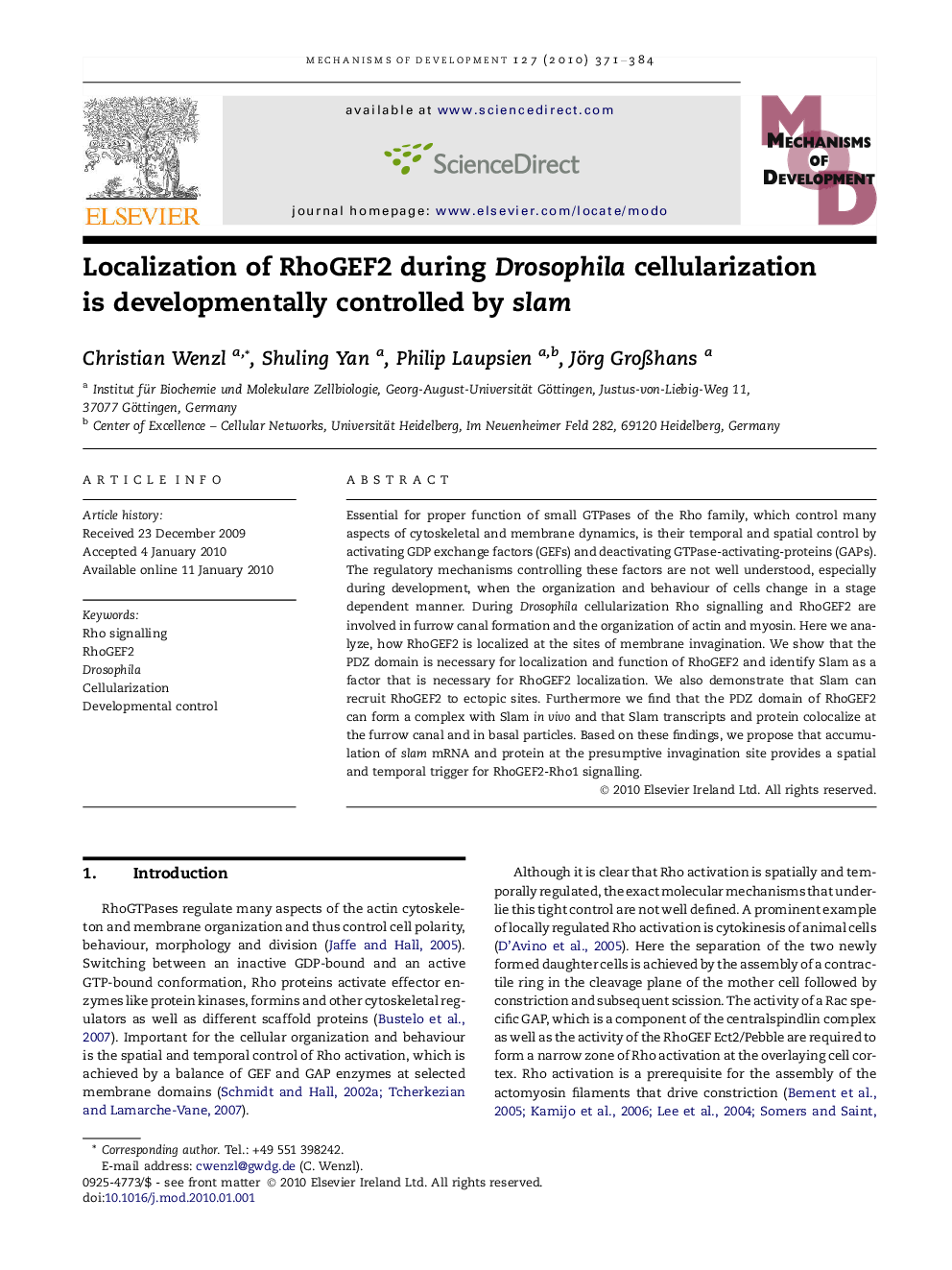| Article ID | Journal | Published Year | Pages | File Type |
|---|---|---|---|---|
| 8476244 | Mechanisms of Development | 2010 | 14 Pages |
Abstract
Essential for proper function of small GTPases of the Rho family, which control many aspects of cytoskeletal and membrane dynamics, is their temporal and spatial control by activating GDP exchange factors (GEFs) and deactivating GTPase-activating-proteins (GAPs). The regulatory mechanisms controlling these factors are not well understood, especially during development, when the organization and behaviour of cells change in a stage dependent manner. During Drosophila cellularization Rho signalling and RhoGEF2 are involved in furrow canal formation and the organization of actin and myosin. Here we analyze, how RhoGEF2 is localized at the sites of membrane invagination. We show that the PDZ domain is necessary for localization and function of RhoGEF2 and identify Slam as a factor that is necessary for RhoGEF2 localization. We also demonstrate that Slam can recruit RhoGEF2 to ectopic sites. Furthermore we find that the PDZ domain of RhoGEF2 can form a complex with Slam invivo and that Slam transcripts and protein colocalize at the furrow canal and in basal particles. Based on these findings, we propose that accumulation of slam mRNA and protein at the presumptive invagination site provides a spatial and temporal trigger for RhoGEF2-Rho1 signalling.
Related Topics
Life Sciences
Biochemistry, Genetics and Molecular Biology
Cell Biology
Authors
Christian Wenzl, Shuling Yan, Philip Laupsien, Jörg GroÃhans,
